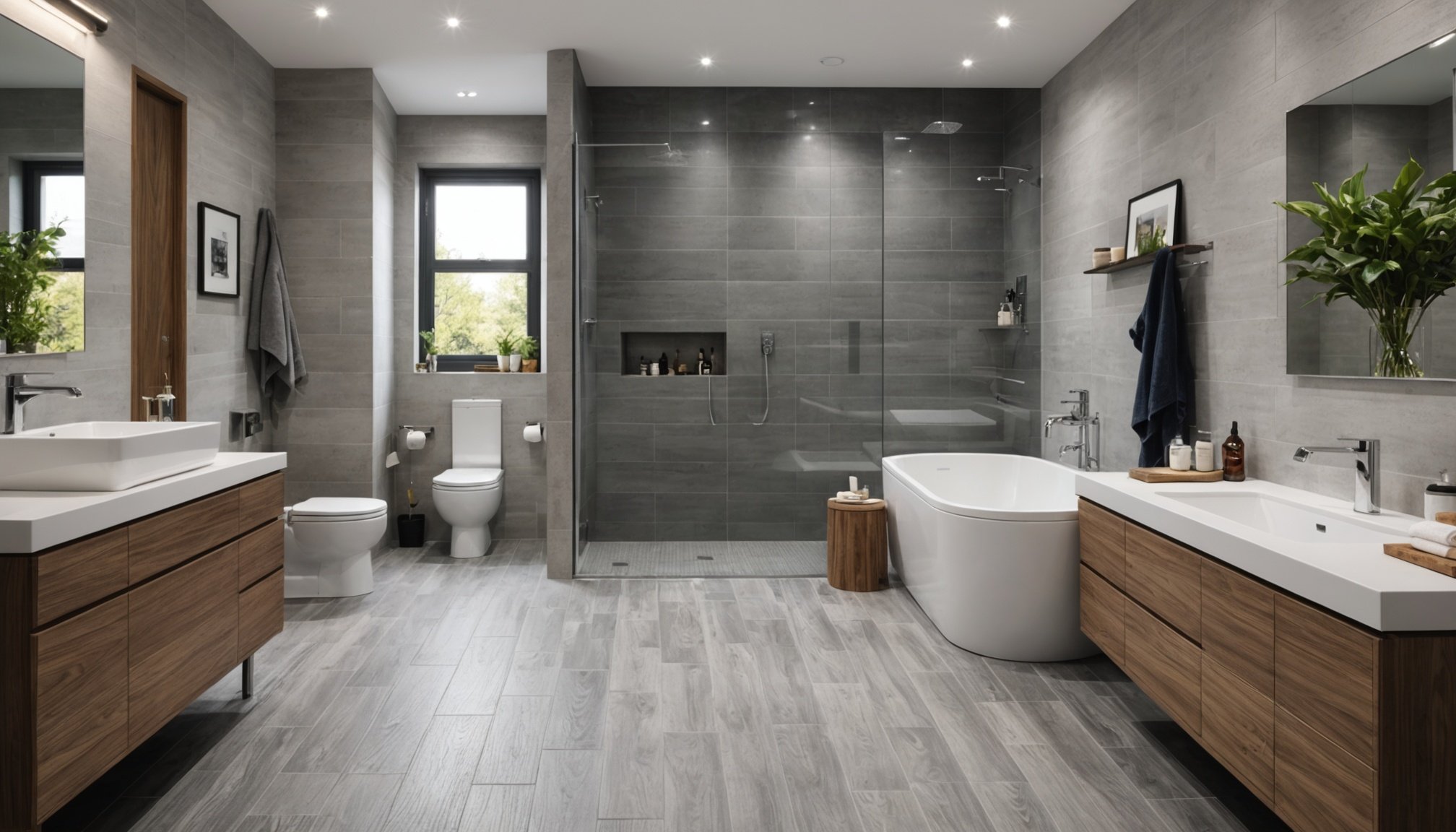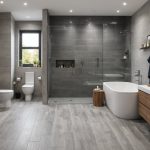Bathroom safety shouldn't compromise style. With wet floors posing a significant slip hazard, choosing the right non-slip flooring material is essential. Explore the top options available in the UK, combining safety features with aesthetic appeal. From vinyl to textured tiles, we’ll help you find the perfect flooring that meets your safety needs while enhancing your bathroom's design. Say goodbye to worries of slipping and hello to a beautiful, secure space.
Overview of Non-Slip Flooring for Bathrooms
Ensuring bathroom safety is crucial, and one effective way to achieve this is through the installation of non-slip flooring. Slippery surfaces can lead to accidents, making non-slip options important for reducing risks. When selecting non-slip flooring, it's essential to consider both safety and aesthetics to create a secure and visually appealing space.
A lire également : Winter Warmth: Top Strategies for Effectively Heating Your UK Conservatory
Common materials for non-slip flooring include textured tiles, vinyl, and rubber. Textured tiles provide grip through their uneven surfaces, reducing the chance of slips. Vinyl is a versatile choice, offering a balance between safety and design, while rubber is known for its excellent traction, making it ideal for preventing falls.
When choosing non-slip flooring, consider the overall design of your bathroom. The flooring should complement existing elements while prioritising safety. Colour and texture play significant roles in achieving a cohesive look without compromising functionality. Additionally, consider the durability of the material to ensure long-lasting protection.
A découvrir également : Transforming Your Modern UK Apartment: Embracing Art Deco Elegance in Contemporary Design
In summary, non-slip flooring is an essential component in maintaining bathroom safety. By understanding the various materials and their benefits, you can make informed decisions that enhance both safety and aesthetics in your bathroom space.
Top Non-Slip Flooring Materials
Choosing the right non-slip materials for your bathroom can significantly enhance safety and style. Understanding the various flooring types available helps make an informed decision.
Vinyl Flooring
Vinyl is a popular choice for bathroom flooring due to its versatility and affordability. It offers excellent non-slip properties, making it a safe option for wet environments. The cost of vinyl flooring is generally lower compared to other materials, and it is relatively easy to install, often requiring just a few tools and basic skills.
Vinyl flooring comes in a variety of styles and designs, allowing you to customise your bathroom's appearance without compromising on safety. From wood-like finishes to vibrant patterns, the options are vast, ensuring you can achieve the desired look.
However, it's essential to consider the potential downsides. Vinyl can be susceptible to scratches and dents, and while it's water-resistant, prolonged exposure to moisture may cause damage over time. Regular maintenance, such as cleaning and sealing, can help prolong its lifespan.
Overall, vinyl flooring offers a balance of cost-effectiveness, safety, and design flexibility, making it a practical choice for many homeowners.
UK Safety Standards for Bathroom Flooring
Understanding UK flooring regulations is crucial for ensuring bathroom safety. These regulations establish guidelines to ensure that flooring materials meet specific safety standards. Compliance is essential for both residential and commercial spaces to minimise the risk of accidents.
In the UK, flooring safety is primarily governed by the Health and Safety Executive (HSE) and British Standards Institution (BSI). These bodies provide comprehensive guidelines on slip resistance, which is a key factor in preventing falls. Flooring products must undergo rigorous testing to meet these standards, ensuring they provide adequate grip even in wet conditions.
For homeowners and businesses, adhering to these regulations is not just about compliance but also about prioritising safety. Non-compliance can lead to legal repercussions and increased liability in case of accidents. Therefore, selecting flooring that meets or exceeds these standards is vital.
To verify the safety ratings of flooring products, resources such as the HSE website and BSI publications can be invaluable. These sources offer detailed information on approved materials and testing methods, enabling consumers to make informed decisions. By choosing flooring that aligns with UK regulations, you ensure a safer environment for everyone.
Installation and Maintenance Tips
Installing non-slip flooring can be a manageable project with the right flooring installation approach and tools. Whether you're a DIY enthusiast or a beginner, following a structured plan is essential.
Step-by-Step Guide for Installing Non-Slip Flooring
- Preparation: Ensure the subfloor is clean and dry. Remove any old adhesive or debris to create a smooth surface.
- Measurement: Measure the area accurately to determine the quantity of flooring needed, allowing for a small surplus.
- Cutting: Use a utility knife or flooring cutter to trim the flooring material to fit the space precisely.
- Adhesive Application: Apply a recommended adhesive evenly over the subfloor, ensuring full coverage.
- Placement: Lay the flooring carefully, pressing down firmly to eliminate air bubbles. Use a roller to secure the bond.
Recommended Tools and Materials
- Utility knife
- Measuring tape
- Adhesive spreader
- Roller
Maintenance Practices
Regular maintenance is crucial for durability and safety. Clean the flooring with a mild detergent and water, avoiding harsh chemicals. Inspect for wear and tear periodically, and address any issues promptly to maintain the floor's integrity.
Visual Examples and Inspiration
Exploring various bathroom design options can spark creativity and help you find the perfect flooring inspiration. Different styles can transform your space while maintaining safety.
Showcasing Non-Slip Flooring Designs
Non-slip flooring doesn't mean compromising on style. From sleek, modern tiles to rustic, textured options, the variety is endless. For instance, a minimalist design using large, matte tiles can create a clean, contemporary look. Alternatively, patterned vinyl can add a touch of personality to your bathroom.
Case Studies of Successful Renovations
Consider a recent renovation where a homeowner combined safety with style by using non-slip textured tiles. The tiles not only provided the necessary grip but also complemented the bathroom's neutral colour palette, achieving both safety and aesthetic goals.
Tips for Combining Safety with Aesthetic Appeal
- Colour Coordination: Choose colours that harmonise with your bathroom's overall theme.
- Texture Balance: Opt for textures that add visual interest without overpowering the space.
- Material Mix: Mix different materials like rubber and vinyl for a unique, layered look.
Incorporating these style ideas ensures your bathroom is not only safe but also visually appealing, creating a space that is both functional and beautiful.












